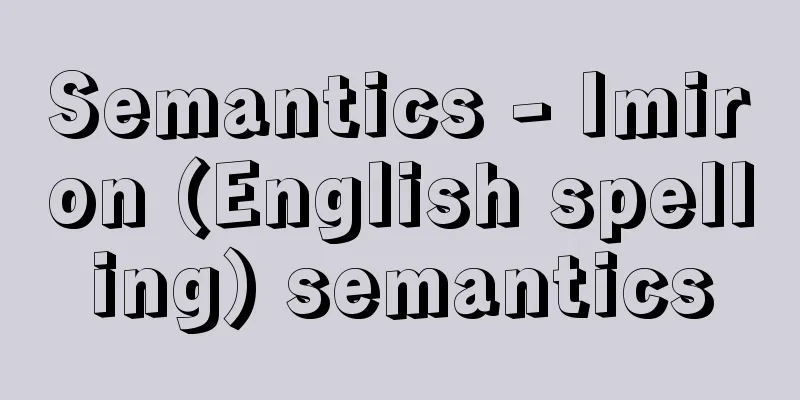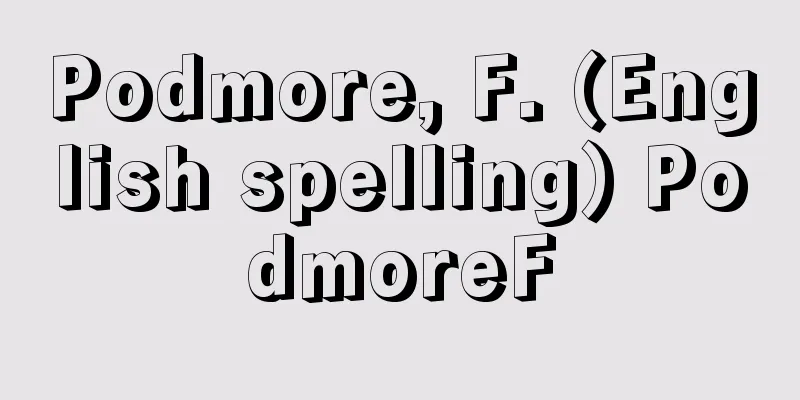Semantics - Imiron (English spelling) semantics

|
Linguistic divisions for the scientific study of language traditionally include morphology, which considers structures such as morphemes below the level of words, and syntax, which deals with structures such as phrases and clauses above the level of words. Among these, semantics deals mainly with the meaning of words and sentences. Semantics has a wide variety of definitions and understandings of "meaning." For example, linguistic semantics, which attempts to describe the hierarchical structure of social knowledge shared by language speakers as a system of differences, and logical semantics, which questions the truth or falsity of a linguistic proposition and the world, are included in semantics. On the other hand, in recent years, with the development of cognitive science and cognitive psychology, semantics has developed that seeks to question the meaning expressed in the human mind, rooted in the human cognitive system such as memory and perception. For example, Rosch, E.'s prototype theory, which will be described later, is an attempt to understand concepts and meanings from the perspective of psychology, and cognitive linguistics, which attempts to reorganize traditional semantics by incorporating such knowledge, can be seen as a new movement in semantics. [Intension and extension] Meaning has two aspects: intension and extension. Intension is the concept of the meaning of an individual word, while extension is the set of objects to which it refers. It is thought that for each example in the external world (object, attribute, relationship, event), humans compare the example with intension to determine whether it can be the referent of the word in question, in other words, whether it is included in the extension. However, this presents a paradox when considering how children learn the meaning of words. Intension can be obtained by extracting commonalities among examples included in extension, but extension cannot be determined without intension. [Historical flow of semantic models] There are many theories on how the meaning of words is represented in the human mind, but the mainstream approach from the 1960s to the 1970s was called checklist semantics. This theory is based on the truth-value semantics of logic, and considers the meaning of a word to be a necessary and sufficient set of semantic primitives that are strictly distinct from other general knowledge about its referent and cannot be decomposed any further. For example, the meaning of the word "cat" is expressed as a set of semantic features such as "+animal," "+feline," and "+pet." This kind of representation makes it possible to process ambiguous meanings symbolically, and became the main method in interpretive semantics, which aims to calculate meaning within the framework of generative linguistics. This idea was also strongly linked to structural semantics, which inherited the idea of Saussure, F. (1916) that the meaning of a word is established in a relative relationship with other words, and was accepted by many researchers. For example, if the meaning of "dog" is expressed using semantic features as "+animal," "+canid," and "+pet," the difference in meaning between "cat" and "dog" can be found in specific pairs of semantic features. In this way, the expression of meaning using semantic features can clearly show the difference between meanings, and it fits well with the structuralist idea of seeking meaning within a system. However, after the mid-1970s, voices claiming the limitations of checklist semantics grew louder. One problem is the difficulty of identifying elemental semantic features. For example, in the case of the aforementioned "cat," some people may keep lions as pets. In that case, "+pet" is not a sufficient feature to distinguish cats from other animals. However, "+animal" and "+feline" alone would make it impossible to distinguish cats from the many other animals of the feline family. In the first place, animals that are kept as "pets" vary greatly depending on the region and culture, so it seems unlikely that the referent of the semantic feature "+pet" can be unequivocally defined. In addition, meanings differ depending on the situation and context. For example, people often use the word "cat" to mean "house cat," but in some situations they may use it to refer to animals in general that belong to the higher concept of the feline family. This situation-dependence of meaning is also a difficult problem to deal with using semantic features. Furthermore, checklist semantics cannot handle cases where the denotation is the same but the implication is different. In checklist semantics, the meaning that can be expressed by semantic features is defined as intension as a necessary and sufficient condition for satisfying extension, so the implication of a word cannot be treated as meaning. For example, "Venus", "morning star", and "evening star" refer to the same object, but humans certainly use these words differently and must feel that they have different "meanings". However, in general, in checklist semantics, the intensions of the three words are all considered to be the same, since they all refer to the same object, "Venus". Considered in this way, there are clearly limitations to a theory that attempts to describe the meaning of a word using only a list of elementary semantic features. To overcome this limitation, the prototype theory was proposed. This theory was originally proposed by cognitive psychologist Rosch as a conceptual representation theory, but has since come to be positioned at the center of cognitive semantics. In the prototype theory, the meaning of a word is represented by a prototype, and whether or not each object is included in the referent of the word is determined by its similarity to the prototype. The category member that is the referent of a word does not need to have all the characteristics of the prototype; an object that has more characteristics will be a better referent of the word, and an object that has less overlap with the prototype will be unclear as to whether it is included in the category. However, even with this theory, once we consider what a prototype is and how it is specifically represented in the mind (brain), various problems arise and its actual state is not clearly defined. In addition, in the context of the extremely diverse ways in which the world is divided by language, the very question of whether a prototype that is universal across languages and cultures is even possible is currently being debated in the debate surrounding the linguistic relativity hypothesis. It should be noted that the aforementioned semantic research from the 1960s and 1970s has not been completely abandoned today. Representing and calculating meaning using semantic features is still a major methodology in current computational linguistics, and the structuralist approach of seeking individual meanings within relative relationships in a system has been strongly carried over to modern semantics, including frame semantics. Meaning is a very vague subject, which is why it is possible to extract a variety of different characteristics from a variety of theoretical perspectives. [Relationship between word meaning and concept] Generally, word meaning and concept are often used synonymously, and concepts are conventionally defined by words. However, once we consider words not only in specific languages such as English or Japanese, but also in languages around the world, we are faced with the question of whether word meaning and concept are the same thing. For example, does the concept of "blue" exist universally? In fact, there are many languages in the world that do not distinguish between "blue" and "green," while there are languages that further classify "blue" and "green" according to base words (words consisting of a single morpheme that cannot be divided any further). This problem becomes even more difficult when we consider the concept of action. For example, the movement action expressed using the verb "walk" in Japanese is expressed in Dutch using four base verbs: snelwandelen, stappen, wandelen, and slenteren. Then, is the unit of the concept of action that we take for granted as "walk" really "walk," or is each individual verb in Dutch a unit of the concept? Recent research has pointed out that word divisions do not necessarily correspond to concept divisions, and that categorization is based on universally prominent perceptual features that do not correspond to word divisions. In light of this, we need to rethink the very schema of word meaning = concept, which further extends to the question of "what is a concept?" →Linguistic relativity hypothesis →Word meaning learning →Cognitive linguistics [Mutsumi Imai, Nobuo Saji] Latest Sources Psychology Encyclopedia Latest Psychology Encyclopedia About Information |
|
言語を科学的に研究するための言語学的な区分として,伝統的に単語以下の形態素などの構造を考える形態論morphology,語以上の句や節の構造を取り扱う統語論syntaxなどがあるが,その中で主に語や文のもつ意味内容を扱うのが意味論である。意味論は「意味」をどのように定義してとらえるかに関して,さまざまなバリエーションをもつ。たとえば,言語話者が共有する社会知である階層の構造を差異の体系として記述しようとする言語学的な意味論,またある言語的命題と世界との真偽を問う論理学的意味論などが意味論に含まれる。一方で近年,認知科学・認知心理学の発展に伴い,記憶や知覚などの人間の認知システムに根差して,人間の心の中で表現されている意味を問おうとする意味論が発展してきた。たとえば,後述するロッシュRosch,E.の典型性理論(プロトタイプ理論)は心理学の側から概念および意味をとらえようとする一つの試みであるし,またこのような知見を組み入れながら伝統的意味論を再編成しようと試みる認知言語学は,新しい意味論の動きとしてとらえることができるだろう。 【内包と外延】 意味には内包intensionと外延extensionという二つの側面がある。内包は個々の語の意味の概念であり,外延は指示対象の集合である。人間は外界の事例(モノ,属性,関係,事象)のそれぞれに対し,内包に照らし合わせてその事例が当該の語の指示対象となりうるか,つまり外延に含まれるかを判断すると考えられる。しかし,これは子どもが語の意味をどのように学習するのかを考えた場合,パラドックスを呈する。内包は外延に含まれる事例の共通性を抽出することで得られるが,内包をもたないと外延が決定できないからである。 【意味モデルの歴史的流れ】 人間の心において語の意味がどのように表象されているのかという問題について,多くの理論が存在するが,1960年代から1970年代にかけて主流であったのはチェックリスト意味論checklist semanticsとよばれる考え方である。この理論は論理学の真偽値意味論に依拠しており,語の意味はその指示対象についての他の一般的知識とは厳密に区別され,これ以上分解不可能な意味素性semantic primitiveの必要十分な集合と考える。たとえば,単語「ネコ」の意味は「+animal」「+feline」「+pet」などの意味素性の集合として表現される。このような表現は,曖昧模糊とした意味を記号論理的に処理することを可能にし,生成言語学の枠組みで意味の計算を目的とする解釈意味論での主要な方法となった。 またこの考え方は,ある一つの語の意味は他の語との相対的な関係において成立するというソシュールSaussure,F.(1916)の考えを受け継いだ構造意味論structural semanticsと強く結びつき,多くの研究者に受け入れられた。たとえば,意味素性を用いて「イヌ」の意味を「+animal」,「+canid」,「+pet」と表わせば,「ネコ」と「イヌ」の意味の違いを特定の意味素性の対に見いだすことができる。このように,意味素性を用いた意味の表現は意味間の差異を明確に示すことができ,体系の中に意味を求める構造主義的な考え方とよく適合した。 しかし,1970年代も半ばを過ぎるとチェックリスト意味論の限界を主張する声が大きくなってきた。一つの問題は,元素的な意味素性の特定の難しさである。前述の「ネコ」を例に挙げれば,人によってはライオンをペットにすることもありうる。すると「+pet」は,ネコと他の動物を区別する十分な素性にはなりえない。しかし,「+animal」「+feline」だけでは多数いる他のネコ科の動物とまったく区別できなくなってしまう。そもそも「ペット」にする動物は地域,文化によっても大きく異なるため,「+pet」という意味素性の指示対象を一義的に規定することはできそうにない。また,意味は場面や文脈で異なる。たとえば,人は「ネコ」という語を多くの場合には「イエネコ」という意味で使う一方,状況によっては上位概念のネコ科に属する動物一般に使うこともある。この意味の状況依存性も意味素性では扱うことが難しい問題である。さらに,外延が同じでも含意が違う場合もチェックリスト意味論では扱うことができない。チェックリスト意味論では,意味素性で表現できる意味は外延を満たす必要十分条件として内包を定義すると考えるので,語のもつ含意は意味として扱うことができないからである。たとえば「金星」,「明けの明星」,「宵の明星」は,指示対象は同じであるが,人間はたしかにこれらの語を使い分けており,違う「意味」だと感じているはずである。しかし,一般にチェックリスト意味論では三つの語の内包は「金星」という同じ指示対象を示すのだから,すべて同一のものとされる。このように考えると,語の意味を原素的な意味素性のリストのみで記述しようとする理論には明らかに限界がある。 この限界を克服すべく,典型性理論(プロトタイプ理論)prototype theoryが提案された。この理論はもともと認知心理学者のロッシュによって提唱された概念表象理論であるが,その後,認知意味論の中心に位置づけられるようになった。典型性理論では,ことばの意味はプロトタイプprototypeによって表象され,一つひとつのモノがその語の指示対象に含まれるかどうかはプロトタイプからの類似度で決まる,と考える。語の指示対象となるカテゴリーメンバーは,プロトタイプのもつ特徴をすべてもつ必要はなく,より多くもつものがその語の指示対象としてより良いものとなり,プロトタイプとの特徴の重複が少ないものはカテゴリーメンバーに含まれるかどうかが曖昧になる。他方,この理論でも,ひとたびプロトタイプとは何か,具体的にどのように心(脳)の中に表象されているのかを考えると,さまざまな問題が浮上し,その実態は明確に規定されていない。また,言語による世界の切り分け方が非常に多様である中で,そもそも言語・文化普遍的なプロトタイプがありうるのかということ自体が,言語相対仮説をめぐる議論の中で現在論争されている。 なお,先に挙げた1960年代から1970年代の意味論研究が現在において,完全に捨て去られたわけではない。意味素性による意味の表現および計算は現在の計算言語学においても主要な方法論であるし,体系における相対的な関係の中に個々の意味を求めようとする構造主義的な考え方も,フレーム意味論などをはじめとした現代の意味論に強く引き継がれている。意味とは非常に漠然とした対象であり,だからこそさまざまな理論的観点から,さまざまな異なる特徴を切り出すことが可能なのである。 【語の意味と概念の関係】 一般的に語の意味word meaningと概念conceptは同義に使われることが多く,概念は慣習的に語によって定義される。しかし,ひとたび語を英語なり,日本語なりの特定の言語に限らず,世界中の言語を射程に入れて考えると,語の意味と概念がはたして同一のものになるのかという問題に直面する。たとえば,「青」という概念は普遍的に存在するのだろうか。実際,世界には「青」と「緑」を区別しない言語が多く存在する一方,「青」や「緑」を基礎語(単一形態素から成るこれ以上分割できないことば)によって,さらに細かくよび分ける言語も存在する。この問題は動作概念を含めて考えるとさらに難しいものとなる。たとえば日本語では,「歩く」という動詞を使って表現する移動動作を,オランダ語ではsnelwandelen,stappen,wandelen,slenterenという四つの基礎語の動詞で言い分ける。すると,われわれが「歩く」と当然のように思っていた動作概念の単位がほんとうに「歩く」なのか,オランダ語の一つひとつの動詞が概念の単位になるのか。最近の研究では語での切り分けは必ずしも概念の切り分けに対応せず,語の区切りに一致しない普遍的に目立つ知覚特徴によってカテゴリー分類をするという指摘がなされている。このことから考えると,語の意味=概念という図式自体を考え直す必要があり,さらに「概念とは何か」という問題に波及していく。 →言語相対仮説 →語意学習 →認知言語学 〔今井 むつみ・佐治 伸郎〕 出典 最新 心理学事典最新 心理学事典について 情報 |
Recommend
Dancing float - Odoriyatai
〘 noun 〙 A float that parades through the streets ...
Suzuka King
Year of death: Tempyo 17.9.4 (745.10.3) Year of bi...
Aspirator (English spelling)
A device for creating a reduced pressure state. It...
Free and easy - Braiko
A banquet that ignores differences in status and r...
Morrison, Toni
Born: February 18, 1931 in Lorraine, Ohio [Died] A...
Gas Lighter
〘 noun 〙 (gas lighter) ① A device for lighting a g...
Senapati (English spelling)
[raw]? [Died] 1601 The founder of the Mataram King...
Old Delhi
...As a result, it became the base of foreign pow...
Piper, J.
…On the other hand, G. Sutherland, Lucien Freud (...
《Challenge》
…Works he wrote during this time, such as Olney H...
Emergence - Uka
This refers to the process by which insects grow ...
Red-backed vole (Japanese name: red-backed vole)
A general term for the genus Clethrionomys of the ...
collective behavior
...A collective expectation pattern that acts in ...
Pacific jack mackerel
A marine fish belonging to the order Perciformes ...
Clark cell
… E = 1.01864 - 4.06 x 10 -5 ( t - 20) - 9.5 x 10...









